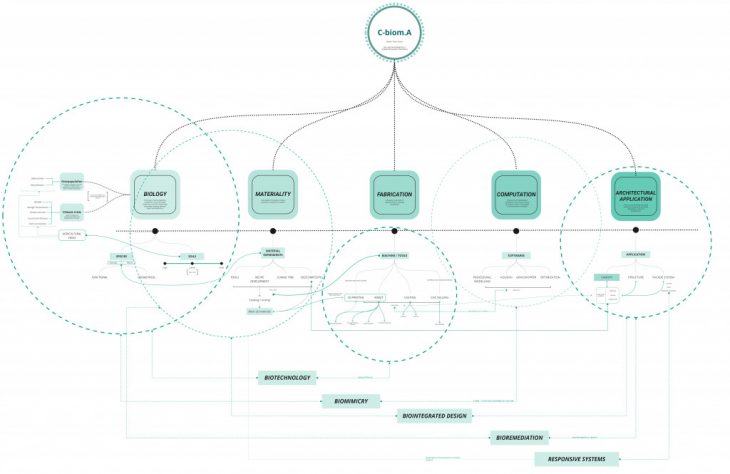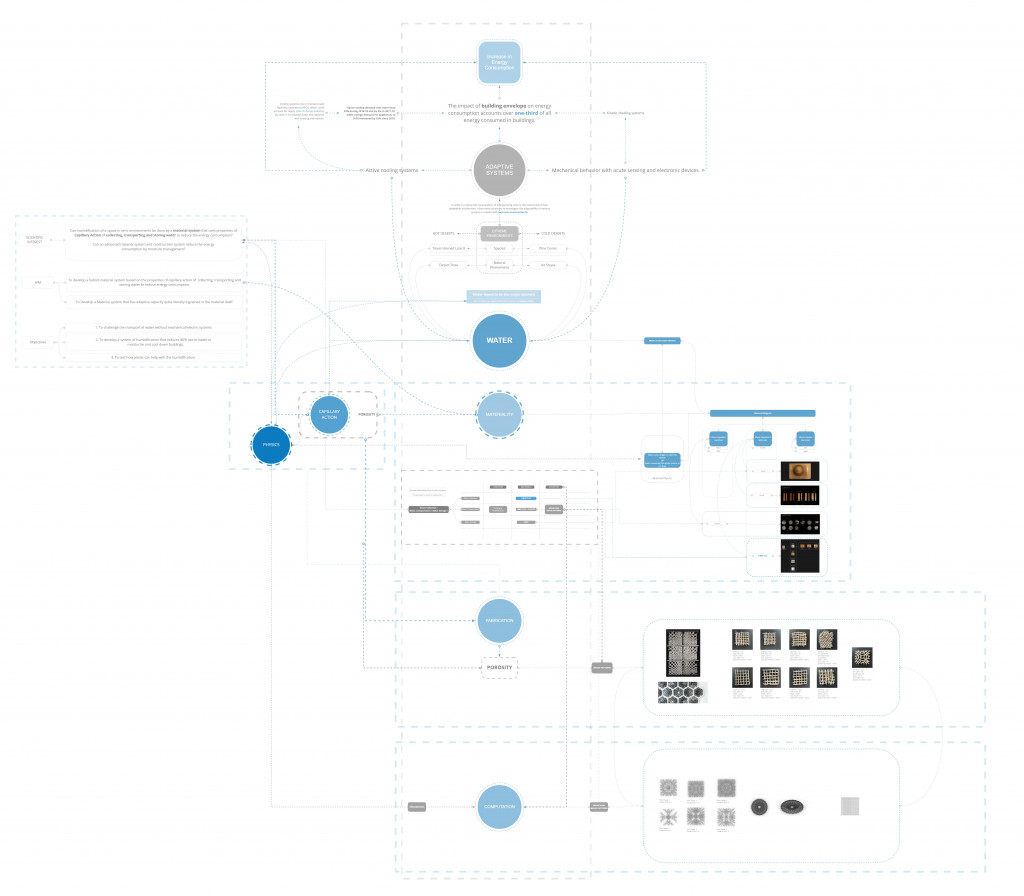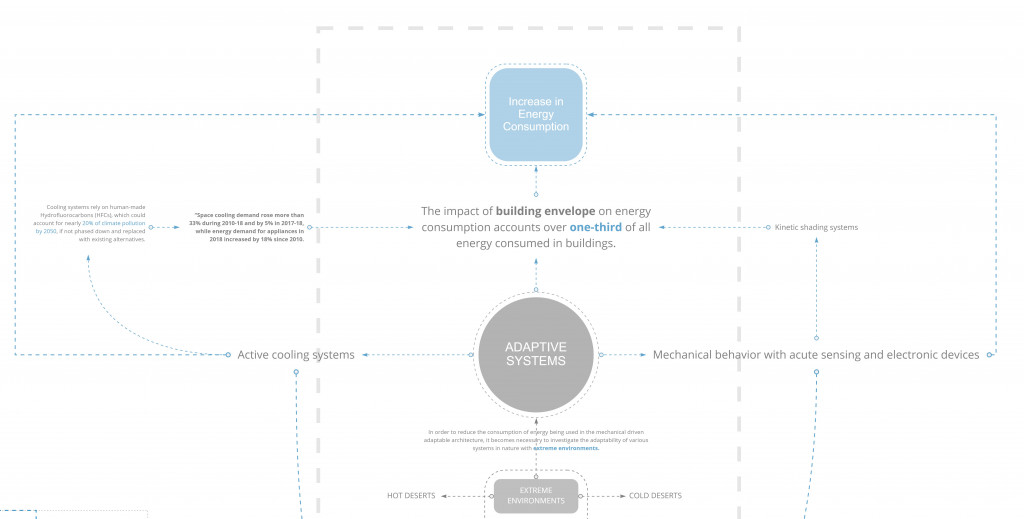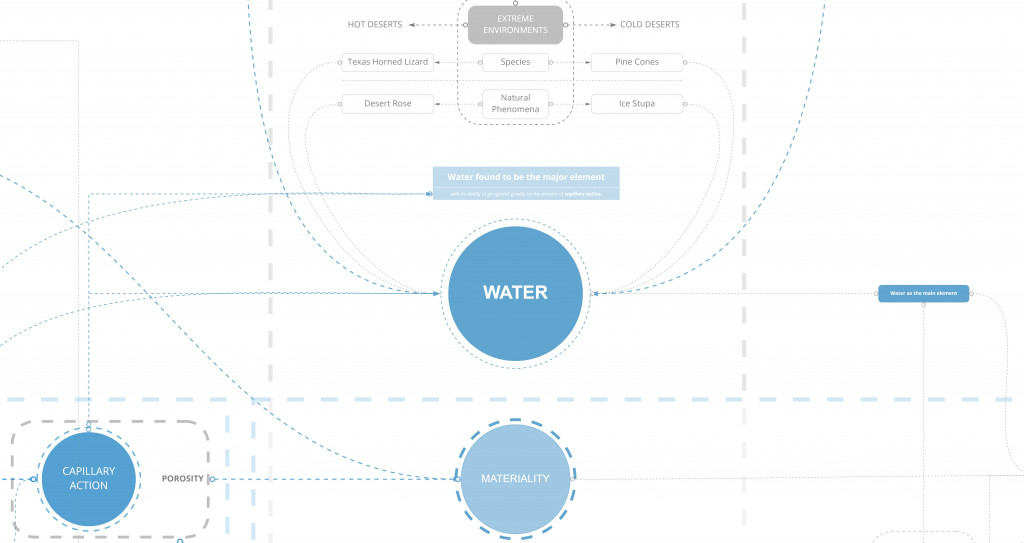RESEARCH & METHODS // COSMOGRAMME WORKSHOP
C-BIOM.A GROUP COSMOGRAMME
The C-BIOM.A group Cosmogramme focuses on Computation-Biology-Materiality-Architrcture, which acts as a framework for the thesis.

C-BIOM.A INDIVIDUAL COSMOGRAMME
This research explores the ability of water to go against gravity using capilary action for natural humidification of the spaces in a xeric context.

//RESEARCH
The research aims at developing an advanced material system and construction system that reduces energy consumption by moisture management – a material system that has adaptive capacity quite literally ingrained in the material itself.
//ISSUE + FRAMEWORK
Active Cooling and Kinetic shading systems have increased the consumption of energy. The impact of building envelopes on energy consumption accounts for over one-third of all energy consumed in buildings, rising to as much as 50% since 2016. On the contrary, the building envelope can integrate about 80% of an environmental solution, thus creating an efficient building.

Understanding various natural and man made systems that help adapt in the extreme
environments, water is found to be the major element with its ability to go against gravity by the
process of capillary action. The system uses properties of capillary action of collecting, transporting
and storing water.

//MATERIAL RESEARCH
The approach of this research is to challenge the transport of water vertically upwards without the use of any mechanical/electric systems using porosity of fiber clay. Through a series of material experiments on porosity of fiber clay, it was test the capillary rise by immersing the fired clay in water.

//FABRICATION
The research explores possibilities in fabrication of surfaces geometry, components and modules for spatial features and technical systems through rigid body physics. A series of fabrication experiments were conducted on space filling curves, minimal surfaces, branching patterns by understanding material properties like porosity.

Defying Gravity_C-BIOM.A // Cosmogramme Workshop is a project of IAAC, Institute for Advanced Architecture of Catalonia developed in the Master in Advanced Architecture (MAA02) 2020/21 by:
Student: Vatsal Kapadia
Faculty: Mireia Luzarraga